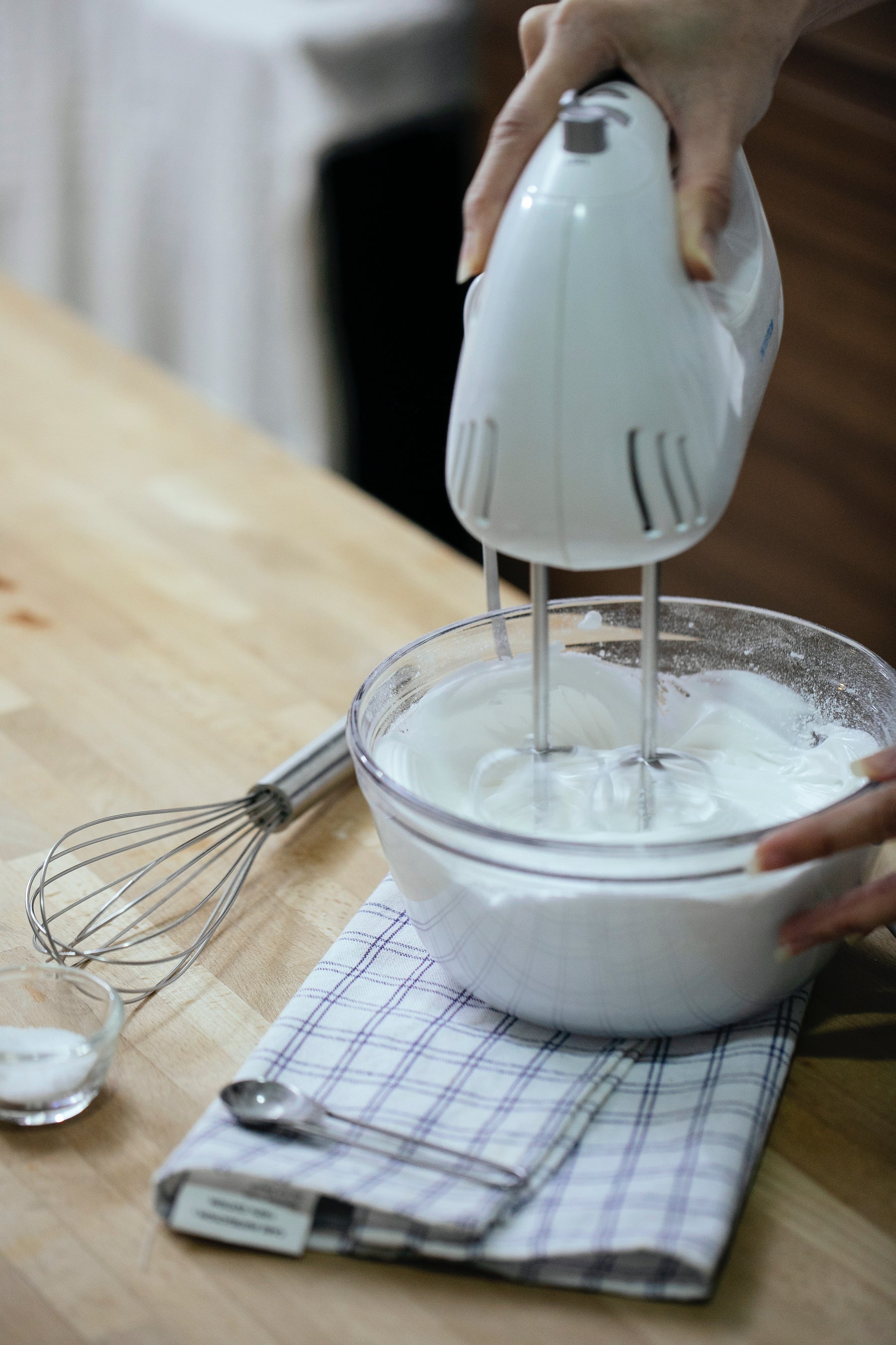
Mixing It Up: A Basic Guide to Stand and Hand Mixers
Having the right equipment is crucial when for any form of cooking, including baking. When it comes to baking, exact measurements of ingredients and the proper mixing of these play a vital role in achieving baking success.
Unlike other types of cooking, making mistakes with the measurements and mixing for the dough, it is challenging to salvage the mixture. The correct calculation and mix of ingredients allow people to get the right shape and taste for their baked goods.
Thus, to achieve success and minimal frustrations, whether you are a keen baker or are just starting your venture, you need to have the right baking equipment. Besides having the right measuring tools, baking pans, baking dishes, baking sheets, spatulas, and liners, you will also need to consider which mixer is the better choice for your baking activities.
Generally, there are two main types of electric mixers: hand mixer and stand mixer, and each has its respective advantages and drawbacks.
Hand Mixer
A hand mixer is a hand-held mixing and blending tool with two removable metal beaters and variable mixing speeds. But aside from the all-purpose metal beaters for whipping egg whites, cream, or butter, some brands of hand mixers also include a balloon whisk or dough hook attachment.
This type of electric mixer is considerably more inexpensive than the other type, stand mixer. Besides cheaper price ranges, hand mixers also provide additional benefits to users: these can be used along with any blending dish, more accessible and quicker to clean, and do not require a lot of maintenance.
Because hand mixers are portable and relatively smaller than stand mixers, they are easier to store and more flexible to operate. However, this type of mixer will need more of your attention as you need to hold it over your mixing bowl. Its portability can also become a disadvantage for people who bake a lot. Hand mixers having a more compact and portable build means it has a less powerful motor; therefore, it can get broken or become dysfunctional when it reaches or goes over a certain speed or use.

Here are the key advantages and disadvantages of hand mixers:
Advantages
- Small and cheap
- Easy to store
- Great for small baking tasks
- Ideal for whipping egg whites
- Easier to clean
- Quick to set up
- Not limited to a specific mixing bowl
Disadvantages
- Cannot do large capacities
- It cannot be used for mixing thick doughs
- More tiring to use
- Less powerful than stand mixers
Stand Mixer
A stand mixer is an electric mixer that has a fixed stand and mixing bowl. It also has a lever-operated arm where you can fit various mixing attachments and adjust mixing speeds. Generally, this is an advanced variation of a hand mixer, featuring a mixing bowl, installing base, and a stand mixer arm. This type of mixer uses a planetary mixing action – the attachments move around the bowl to thoroughly mix the ingredients.
Compared to a hand mixer, a stand mixer has more tools, attachments, and mixing speeds. They typically come with a balloon whisk, dough hook, and flat beaters, as well as a splash guard that reduces the chances of ingredients from splashing. Accordingly, some stand mixers provide additional attachments, such as mincers, food processors, jug blenders, and ice cream makers. Other modern stand mixers also offer programmable functions, including timer, bells, and automatic stop.
Stand mixers are more durable and robust than hand mixers. They have a stronger motor and build, making them an indestructible kitchen appliance compared to electric hand mixers.
However, despite the many advantages stand mixers provide, these also have some disadvantages for users. As stand mixers are not portable like hand mixers, they can be tiresome to move around the kitchen and challenging to clean up. Another possible drawback is that it is more expensive than a simple hand mixer.

Here are the key advantages and disadvantages of hand mixers:
Advantages
- Can handle larger tasks and bigger batches
- Great for heavier doughs
- Have a more powerful motor than hand mixers
- Have more speed settings
- Requires less attention
Disadvantages
- Usually more expensive to purchase than hand mixers
- Larger and heavier than other mixers
- It can be challenging to move around or store
- Challenging to clean
Which Mixer Should You Buy?
Whether you use a stand mixer or a hand mixer, you can ensure proper mixing or blending of baking or cooking ingredients. Your choice of an electric mixer will depend on factors such as the cost of the mixer, functionality, amount of work required to clean it up, ease of use, and your counter space and storage. It will also depend on your baking and cooking activities.
Suppose you beat, mix, blend, and bake a lot, then you should go for the stand mixer that offers high power and extra functions. Consequently, if you want an electric mixer that is cheap to use and allows you to have more flexibility while cooking, you should go for the hand mixer.
Sources:
